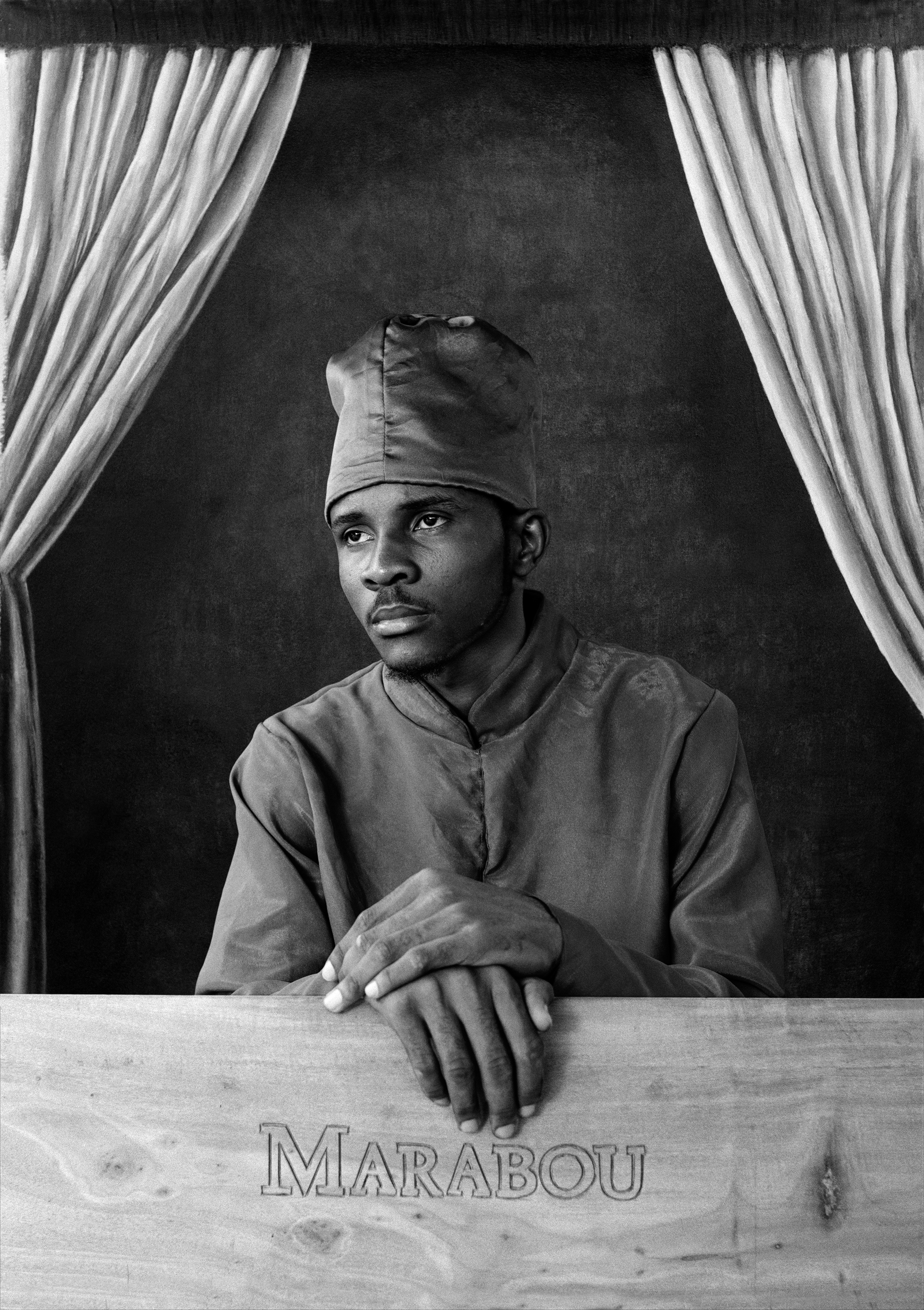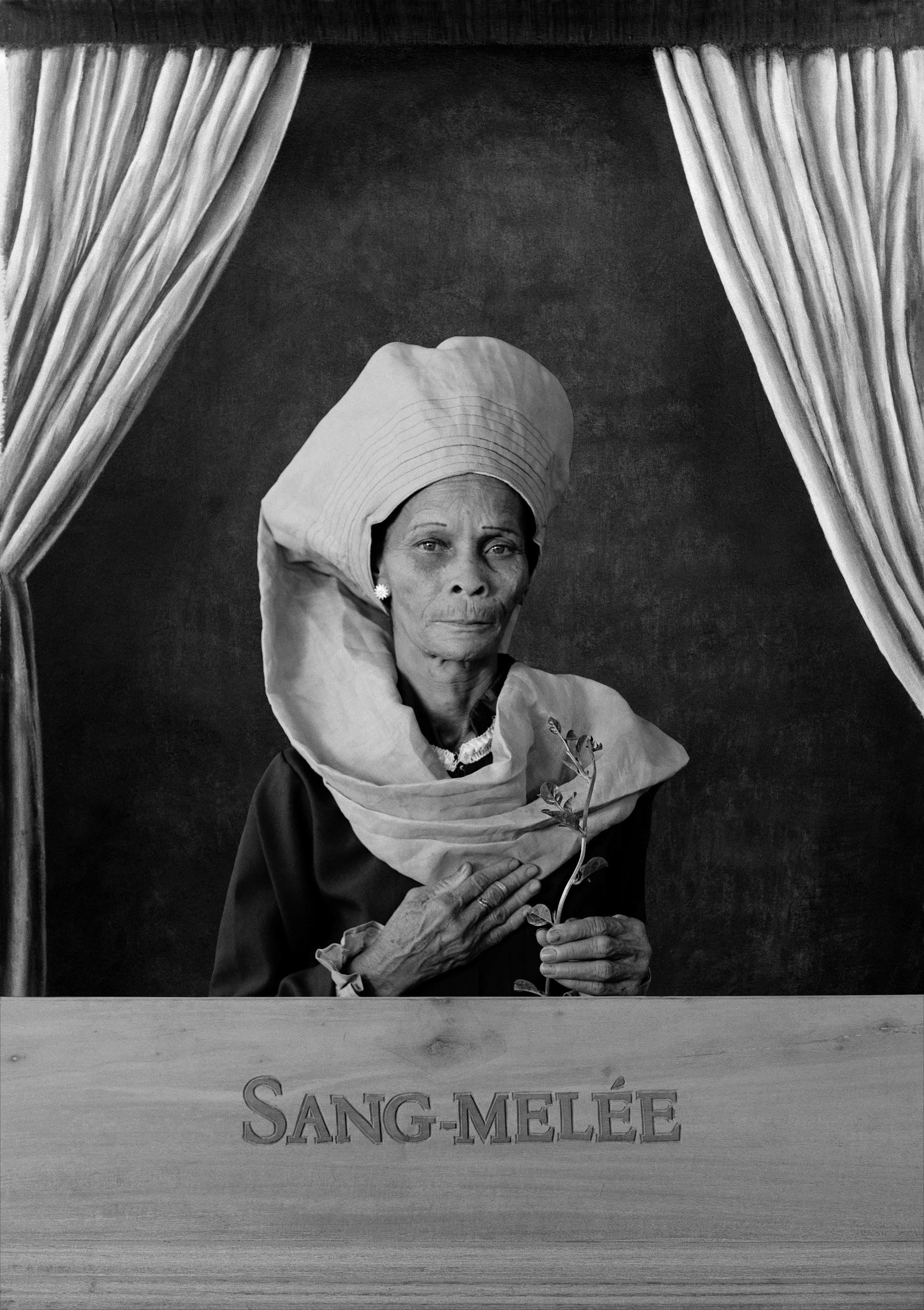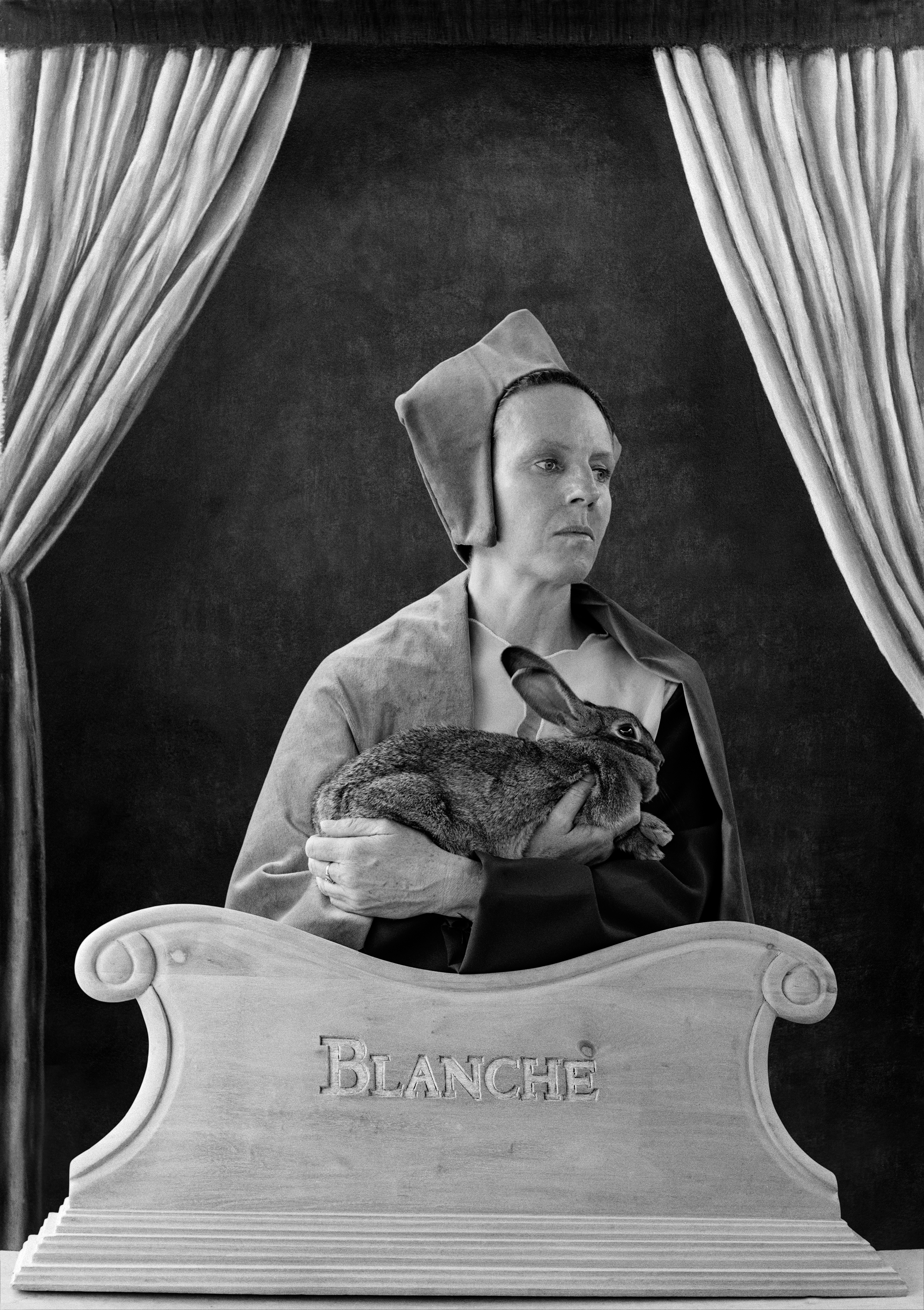Caste | Cast

CASTE PORTRAITS
The Caste Portraits investigate the practice of the grading from black to white of skin colour, which marked the extent of racial mixing in 18th century colonial Haiti. Moreau de St Mery, a French colonialist living in Haiti, created a surreal taxonomy of race which classified skin colour from black to white using names borrowed from mythology, natural history and bestial miscegenation.
Each name corresponds with a percentage of the fusion of black and white blood. As Colin Dayan, a Haitian historian, comments, ‘Stranger than any supernatural fiction, the radical irrationality of Moreau St Mery’s methods demonstrates to what lengths the imagination can go if driven by racial prejudice.’
Leah Gordon made the Caste Portraits depicting the nine skin varieties, with her partner, Andre Eugene, a Haitian sculptor, at the beginning of the racial spectrum as ‘Noir’ and with herself as ‘Blanche’, at the end. Gordon was questioning her own relationship and culpability with Haiti’s history by placing herself in the series.
2023 - Acquisition of the Caste Portraits by the Kadist Foundation for their European collection.
EXHIBITIONS
2024 - UMOCA, Utah Museum of Modern Art, Salt Lake City, USA
2023 - RISING, Melbourne
2022 - Atis Rezistans|Ghetto Biennale, documenta fifteen, Kassel, Germany
2022 - Château des ducs de Bretagne
2021 - Origin Stories: Photography of Africa and Its Diaspora, Norton Museum of Art
2019 - The Body Says: I am a Fiesta, Norton Museum of Art, FL, USA
2017 - Chita Tann - joint show with Andre Eugene, Havre Magasinet Museum, Boden, Sweden
2016 - Atlas [of the ruins] of Europe, CentroCentro Cibeles de Cultura Ciudadania, Madrid
2015 - From Within and Without: History of Haitian Photography, MOA|FL Museum of Art, USA
2014 - 11ème Biennale de l’Art Africain Contemporain, Dak'art, Senegal
2014 - HOUSE, Regency House, Brighton, UK
2012 - Taboo, Museum of Contemporary Arts, Sydney
2012 - Caste, Riflemaker Gallery, London (Solo Show)








CASTE | CAST
In this project the Caste portraits are revisited to speculate on parallel histories linking Northern England and Haiti.
The portraits are exhibited alongside a film of a river journey from Manchester, along the Manchester Ship Canal, past Ellesmere Port and finishing in Liverpool. Ellesmere Port, the town where Leah Gordon was born, is equidistant between Liverpool, a city built upon the slave trade and Manchester, built upon the industrial revolution. Quotes from historians and scholars appear on screen, which highlight shared economic and political histories.
Two short 16mm films, one of machinery fabricated near Liverpool and now lying ruined and overgrown sinking into the earth in Haiti and one of the storage rooms in the National archives where the only known printed copy of Haiti's Declaration of Independence dated January 1st 1804, was discovered, show Haiti’s history hidden and embedded in Britain’s colonial archives whilst Britain’s industrial past lies rusting and overgrown in Haiti’s tropical landscape.
These historical reflections sit alongside a prophetic photographic reconstruction of William Blake’s illustration of ‘Europe Supported by Africa and the Americas’ used by the British abolitionists. The reconstruction functions as a stark look at a future where the old economic power balances are shifting and changing.

